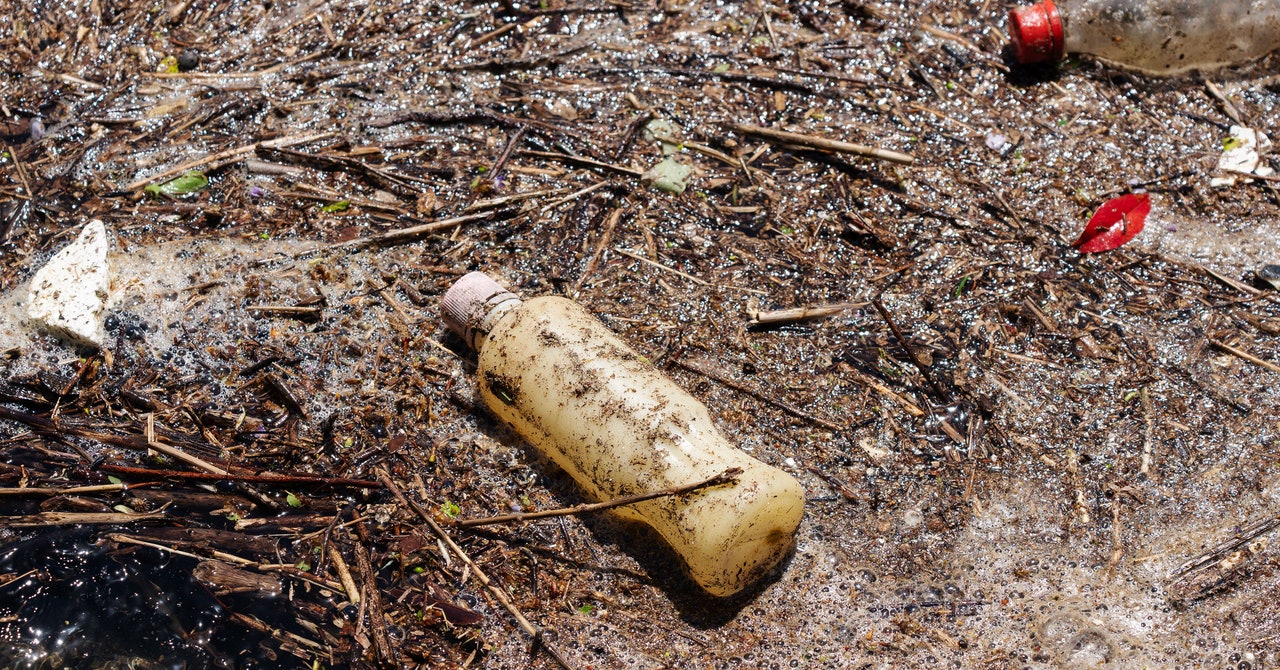
In addition to reducing production, the report argues, the world must improve recycling systems, which alone could reduce plastic pollution 20 percent by 2040. But recycling in its current form is problematic for a number of reasons. For one, the recycling rate in the United States is now just 5 percent of plastic waste. The US and other developed nations have long shipped millions upon millions of pounds of the plastic waste they can’t profitably recycle to developing countries, where bottles and bags and wrappers are often burned in open pits or escape into the environment.
A core issue is that over the years, plastic products have gotten much more complicated and therefore much less recyclable: Nowadays, food pouches might have layers of different polymers, or a product might be half plastic, half paper. “By agreeing and then imposing design rules that allow, for instance, a limited number of polymers or a limited number of chemical additives that play well within the system, that already improves heavily the economics of recycling,” says Llorenç Milà i Canals, head of secretariat of the Life Cycle Initiative at the UNEP and lead coordinator of the report. “That makes recycling much more profitable because it will take much less to bring those materials back into the economy.”
However, even recycling that’s done properly comes at a huge environmental cost: A study published earlier this month found that a single facility might emit 3 million pounds of microplastic a year in its wastewater, which flows into the environment. The upside, at least, is that the facility would have released 6.5 million pounds of microplastic had it not installed filters, so there’s at least a way to mitigate that pollution. But these tiny particles have now corrupted the entirety of the planet, including a broad range of organisms. And generally speaking, as plastics production is increasing exponentially, microplastic pollution is increasing in lockstep.
In that sense, then, recycling is making the plastic pollution problem worse. “Plastic was not designed to be recycled, and recycling it only reintroduces toxic chemicals and microplastics into the environment and our bodies,” says Cohen. “The [UNEP] report’s authors even go so far to acknowledge that even if it is achievable, a circular economy of plastics would be decades in the making, and even under the best scenario, following the road map as outlined would lead to approximately 136 million metric tons of plastic flowing into landfills, incinerators, and the environment to cause pollution in the year 2040. That is an enormous—and unacceptable—amount of plastic.”
Really, recycling allows the plastics industry to keep making all the plastic it wants, under the guise of sustainability. “If you had an overflowing bathtub, you wouldn’t just run for the mop first—you turn off the tap,” says Jacqueline Savitz, chief policy officer for the conservation nonprofit Oceana, who wasn’t involved in the report. “Recycling is the mop.”
Another strategy highlighted in the new report is “extended producer responsibility,” in which manufacturers don’t just make the stuff and wipe their hands of it. The plastics industry has long promoted recycling (even though it has known that the current system doesn’t work) because it makes you, the “careless” consumer, responsible for pollution. Extended producer responsibility puts the burden back on the industry, forcing producers to, say, implement systems to take bottles back and reuse them.


